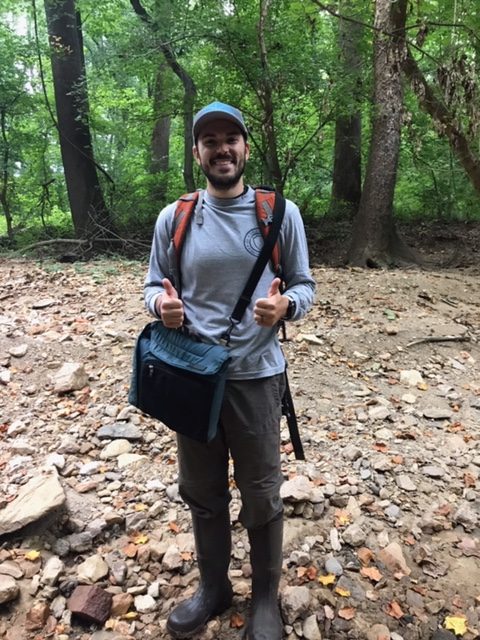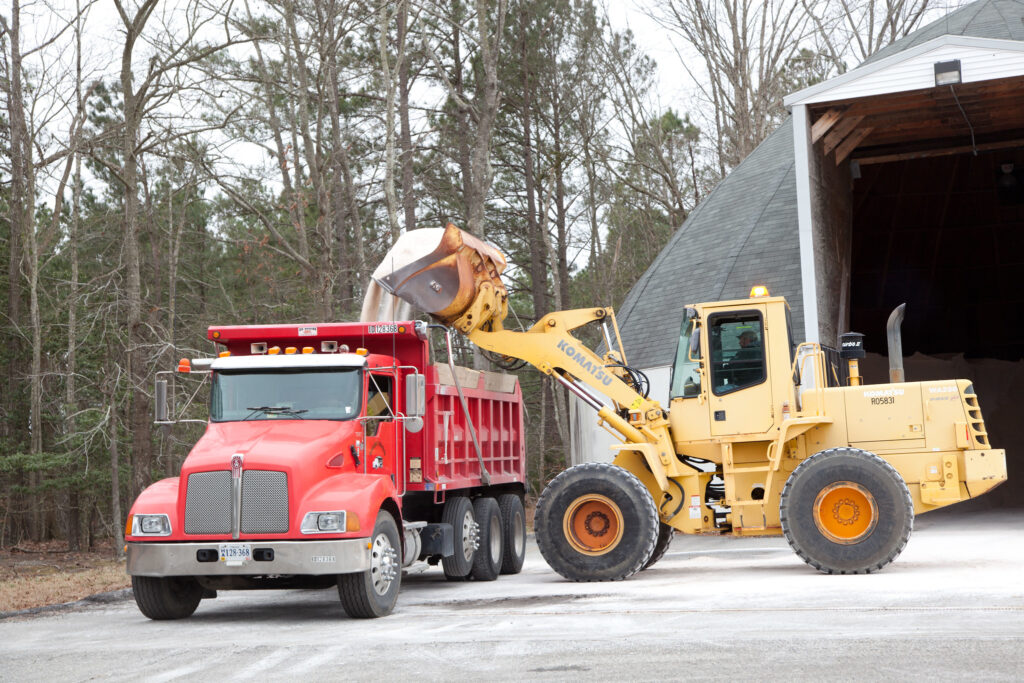Increasing development worldwide, driven by urbanization and a growing human population, is having significant effects on our waterways. Baltimore is no exception to this trend. Because of its location on the Chesapeake Bay and its proximity to the Patapsco and Gwynns Falls rivers, Baltimore, like many coastal urban areas, has an outsize effect on water quality in the region.
Matthew Baker, professor of geography and environmental systems, has just published new results in Water Resources Research on the relationship between urbanization and water chemistry in Baltimore. At a basic level, his findings were not surprising: as urbanization increases, water chemistry changes in a way that diminishes biodiversity in streams and threatens human health. However, when he looked a little deeper, Baker says, “We found it was more complex than we thought.”
Going to extremes
Baker, Matt Schley ‘13, environmental science, and their industry colleague Joseph Sexton used two 30-year data sets to tease out the complex relationship between urbanization and water chemistry.
One data set included maps of impervious surface within 12 local watersheds developed annually from satellite images collected from 1985 to 2015. Using the annual information, the authors were able to track urbanization in each watershed through time.
Baker and his collaborators compared that information with another 30-year data set collected by the Maryland Department of Natural Resources that measured the monthly specific conductivity in the same dozen watersheds. Conductivity is a proxy for the amount of dissolved solids in the water, because most dissolve as conductive ions.

The team wasn’t surprised to find that as impervious surfaces expanded, more dissolved material ended up in streams and rivers. Instead of rainwater soaking into the ground and being filtered by plants, it would flow quickly into waterways, picking up contaminants from asphalt and concrete along the way. However, that wasn’t the full story.
“What really ticks up is the variability,” says Baker. In the watersheds that urbanized the most during the study period, short-term changes in water chemistry became much more extreme.
This is one clue as to why aquatic organisms may be struggling. “Because unlike invertebrates such as worms, snails, and crustaceans, many aquatic insects are adapted to a very narrow range of water chemistry,” Baker says, “they’re not able to withstand the erratic changes.”
A big villain
The researcher’s findings pointed to a particular culprit: road salt. Wintertime conductivity values spiked in more urbanized watersheds, and the spikes were markedly worse in years with extreme winter weather events, when more road salt was applied.
“When watersheds become increasingly connected to streams through storm sewers, road salting and other kinds of salt accumulation have a much more immediate and more extreme impact,” says Baker. And for highly developed areas with a lot of impervious cover, the impact lasts, because it accumulates through time.
“Once you get above a certain level of development, you start to see the signal of a particular winter event show up in a stream and then echo for up to a year,” Baker explains. When an area surpasses around 12 percent impervious cover, he notes, sensitive insects are almost totally eliminated—insects that are essential for an ecosystem to thrive.
“We definitely have to lower the amount of road salt we’ve been applying, and we’re seeing some signs of that now,” Baker says, pointing to recent changes in the way the Maryland State Highway Administration preps for winter storms. “The problem is, many others have yet to adjust,” such as local jurisdictions and private landowners, he adds.

Even with less than five percent impervious cover—a relatively small amount of development—Baker’s results show there’s still a chemical signal in the water that may be enough to harm sensitive species. Only at higher levels of development, where the road salt effect is more pronounced, do hardier species also suffer.
“So road salt is a big villain here, but it’s the big villain of getting rid of more tolerant organisms,” Baker says. “There’s something else contributing to the elimination of sensitive organisms from dilute waters.”
Baker says weathering infrastructure, such as concrete culverts, may be to blame. “We need to pay closer attention to the materials we’re using in and on infrastructure,” he says, “because it’s the constant leaching of those materials that seems closely associated with species loss at lower levels of development.”
Doing things differently
The winter spikes also suggest that the way data is collected to study water chemistry and its effects on aquatic life may be inadequate.
Invertebrate and water chemistry data tend to be collected together in the spring. According to the long-term data set, streams that were saltier in the spring were also saltier in winter, but a small change in spring conductivity translated to a huge change in winter concentrations. So, Baker says, “Measuring water quality in the spring is a misleading way of appreciating how bad it can be at other times of the year.”
Overall, “monitoring efforts need to be expanded,” says Schley, who today is a hydrologist for the U.S. National Park Service—a career path he credits in part to his experience working with Baker on this research. “The results of the study suggest that more continuous monitoring efforts would be a welcome change,” particularly if data were collected across a broad range of locations, he says. “Understanding trends in stream chemistry on a site-by-site basis would allow for more effective management of our critical stream ecosystems.”
Although there are certainly challenges ahead for documenting and mitigating the detrimental effects of urbanization on waterways, the new results provide powerful information that policymakers can use to inform their decisions affecting the environment, such as salt usage and regulating new development.
Baker and his colleagues are currently working on describing relationships between salts and aquatic life in greater detail to make the potential consequences of policy decisions clearer. They hope to inspire more scientifically-informed policies and planning throughout the region.
Image: Matthew Baker; photo by Marlayna Demond ’11 for UMBC.

